When someone is living with an eating disorder, every part of their life is often affected. This includes their body, their social life, and their brain. In this blog post, we will be talking about the effects of the starving brain which is the brain of somebody living with an eating disorder that is impacted by malnutrition.
Watch the Video!
At Change Creates Change Eating Disorder Care, we often say that eating disorders start as a mental health concern but quickly deteriorate into a physical health concern. What we mean by this is that the mental health piece of the eating disorder is the preoccupation with weight, shape and appearance. What can happen is that the brain ends up “zero-ing” in on ways to control food & nutrition intake in order to control weight, shape, and appearance and folks can experience “eating disorder brain fog”. This is not all that an eating disorder focuses on, but it is often what leads to the worsening of someone’s health.
If the eating disorder ends up restricting food and performing compensatory behaviours such as purging, overexercising, or misusing laxatives the body goes into a state of malnutrition. This means that the body is not receiving all the nutrition it requires to function optimally. In fact, even modest dieting can have an impact on our brains, and children and teenagers are especially vulnerable to this. When the body does not get the fuel it needs, it relies on the built-in safety nets it has in place to survive.
The Starved Brain
A major repercussion of malnutrition is that the brain goes into a starved state. This means that is that nutritionally, the brain is actually starving. It is missing the crucial nutrients it needs to function optimally. The brain relies on glucose, a form of carbohydrate, as its main source of fuel. If we are not eating enough carbohydrates throughout the day to fuel the body and brain, the body will move into a survival state and try to break down other nutrients for fuel for our brain.
This results in a brain that is not functioning well, but it can still sleep, work, participate in school and other “must-do” daily functions. The brain is simply in a survival mode and it is not functioning optimally. People on the outside, such as yourself as a parent, will begin to see the signs of brain impairment. These can manifest as difficulties with sleeping, concentrating, a lowered attention span, or a lack of interest in things that used to be of interest such as hobbies, sports, and friends. Your child will have a hard time making decisions, as decision-making has been shown to be impaired in acute phases of eating disorders.
The Eating Disorder Brain
When our bodies are malnourished or over-exercised, there are changes in our brain chemistry. For example, our brains will produce less serotonin, which is the hormone responsible for feelings of happiness and well-being. When our brains cannot produce enough serotonin, it may result in increased symptoms of depression.
As the parent on the outside of the eating disorder, you may notice that your child is paying more attention to things that are related to the eating disorder. This can include food, nutrition labels, calories consumed, exercise, body shape and appearance, and how they look in photos. Your child may begin to actually see their bodies differently. For example, they may see their body is the mirror as much larger than it actually is. The starved brain is really being run by the eating disorder. So not only is the brain not functioning optimally, it is now being run by a mental health concern.
At Change Creates Change, we describe this as the “eating disorder brain” versus the “well brain”. You may also have heard this referred to as the “eating disorder brain” versus the “normal brain”. As the eating disorder progresses, the “eating disorder brain” grows and begins to take up more and more space. Because of this, the “well brain” begins to shrink down. What can happen is that the person affected by the eating disorder begins to fade away and the eating disorder is able to come out at full force.
When the “eating disorder brain” is in charge, it’s in control of all the decisions, thoughts, feelings, and behaviours. This can be very difficult for both the person living with the eating disorder as well as their family and friends. For your child, they’ve likely lost connection with who they are. For yourself, you may have watched your child fade away and this not-so-kind eating disorder come to the forefront and really begin to run the show. This might also mean that your child now has strict rules and rituals around food choices, different decisions around where and what to eat, and may isolate themselves.

The Takeaway
At Change Creates Change Eating Disorder Care, we encourage parents to recognize that the person inside of that body and the person presenting is not the same as your child before the eating disorder. That person is still in there, but that “well brain” is really being overpowered by the “eating disorder brain”. If you find yourself wondering why your child is making these decisions and/or harming themselves, recognize that it is not your loved one making those choices, but really it is the “eating disorder brain” in charge. That eating disorder has become so loud that your child can’t help but to listen to that part of the brain. The easiest way for your child to quiet the “eating disorder brain” is to do what it is telling them to do – engage in the eating disorder. This is one of the most difficult parts for the individual with the eating disorder.
In our practice, we often see first-hand just how hard this is for children and their parents to navigate. It’s difficult to tell the difference between what thoughts are rooted in the “eating disorder brain” versus what thoughts are rooted in the “well brain”. When the brain is starving and malnourished, it is even harder to try to get help or even recognize that something isn’t quite right.
How to Get Your Child Help
The “eating disorder brain” will be loud and in charge when somebody is not getting help for their eating disorder. This is not a situation that you and your child need to navigate on your own. It is quite tricky and can be difficult to tease out what is the eating disorder and what is not. Our team of expert dietitian nutritionists and therapists are here to empower parents to best support their child in their eating disorder recovery. Click the button below to book a free 15-minute consultation call with us.
*Reserved for Canadian residents.

